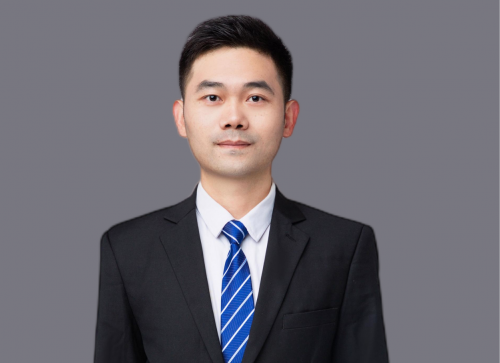Faculty
Liangming Chen is currently an associate professor in School of Automation and Intelligent Manufacturing, Southern University of Science and Technology, China. He won the provincial first prize in the national electronic design competition for college students, the national second prize in the mathematical modeling competition, and the honorary title of outstanding graduate. He was a guest editor in the SCI journal Electronics and the conference ICARCV 2022, and a co-chair in a session of ICCA 2019. He and his collaborators developed the angle rigidity graph theory and applied it to multi-agent formation control and distributed localization. His research works were published in many top journals, including IEEE TAC, Automatica (top journals in system and control society), and IEEE TSP (top journal in signal processing society), etc. He was selected into the National Talent Program Youth Project and the Shenzhen Overseas Talent Program.
Education
2017.9-2021.3 Ph. D. Systems and Control, University of Groningen, The Netherlands
Supervisors: Prof. Ming Cao (IEEE Fellow), Prof. Jacquelien M. A. Scherpen (IEEE Fellow)
2015.9-2019.12 Ph. D. Control Science and Engineering, Harbin Institute of Technology, China
Supervisors: Prof. Chuanjiang Li, Prof. Yanning Guo
2011.9-2015.6 B.Eng. Automation, Southwest Jiaotong University, China
Working Experiences
2022.4 -2022.11 Research Fellow, Nanyang Technological University, Singapore
Supervisor: Prof. Lihua Xie (Fellow of Academy of Engineering Singapore, IEEE Fellow)
2021.4 -2022.4 Research Fellow, Nanyang Technological University, Singapore
Supervisor: Dr. Mir Feroskhan
Research Introduction
1. Rigidity graph theory: Rigidity graph theory plays an important role in the fields of mathematics, mechanics, and biology. Particularly, it is the theoretical tool for multi-agent formation control and distributed localization problems.
2. Multi-agent formation control: Many engineering scenarios require unmanned swarm systems to form a desired geometric shape, which needs to study multi-agent formation control.
3. Multi-agent distributed localization: (Relative) position information is necessary for the execution of multi-agent algorithms, which prompts the study of multi-robot localization from some available sensors in engineering practices.
Awards & Honors
2022, Shenzhen Overseas Talent Program
Papers
(1) L Chen; M Cao; C Li; Angle rigidity and its usage to stabilize multi-agent formations in 2D, IEEE Transactions on Automatic Control, 2021, 66(8): 3667-3681 (Regular paper). video
(2) L Chen; H Garcia de Marina; M Cao; Maneuvering formations of mobile agents using designed mismatched angles, IEEE Transactions on Automatic Control, 2022, 67(4): 1-14 (Regular paper). video
(3) L Chen; J Mei; C Li; G Ma; Distributed leader-follower affine formation maneuver control for high-order multiagent systems, IEEE Transactions on Automatic Control, 2020, 65(11): 4941-4948.
(4) L Chen; Z Sun. Globally stabilizing triangularly angle rigid formations. IEEE Transactions on Automatic Control, 2022, early access, DOI: 10.1109/TAC.2022.3151567.
(5) L Chen; L Xie; X Li; X Fang; M Feroskhan; Simultaneous localization and formation using angle-only measurements in 2D, Automatica, 2022, Vol. 146, 110605 (Regular paper). video
(6) L Chen; Triangular angle rigidity for distributed localization in 2D, Automatica, 2022, Vol. 143, 110414 (Regular paper).
(7) L Chen; Z Sun; Gradient-based bearing-only formation control: an elevation angle approach, Automatica, 2022, Vol. 141, 110310.
(8) L Chen; K Cao; L Xie; X Li; M Feroskhan; 3-D Network localization using angle measurements and reduced communication, IEEE Transactions on Signal Processing, 2022, 70: 2402-2415.
(9) L Chen; M Shi; H Garcia de Marina; M Cao; Stabilizing and maneuvering angle rigid multi-agent formations with double-integrator agent dynamics. IEEE Transactions on Control of Network Systems, 2022, 9(3): 1362-1374.
(10) L Chen; Q Yang; M Shi; Y Li; M Feroskhan; Stabilizing angle rigid formations with prescribed orientation and scale. IEEE Transactions on Industrial Electronics, 2022, 69(11), 11654-11664. video
(read more [https://faculty.sustech.edu.cn/chenlm6/en/]、[https://sdim.sustech.edu.cn/index/teacher_detail?id=25])
Recruitment Announcement
English version: The main research direction of Chen Liangming's research group is rigid graph theory and its applications in multi-agent systems and other fields. The research group aims at high-impact research results. The research group provides competitive salaries to the members of the group, helping members expand their academic horizons, improve their scientific research capabilities, and achieve high-impact research results. Applicants should have a background in automation/applied mathematics/electrical, computer, or mechanical engineering, have a solid theoretical foundation (or rich engineering practice experience) in mathematics and control, and are good at Chinese and English writing.
The research group is currently recruiting research assistants and postdoctoral fellows (3 positions for each type). We also welcome students to join us as doctoral students, master students, senior undergraduate students, visiting students, etc. Interested ones are welcome to contact me via email chenlm6@sustech.edu.cn. Please also refer to https://www.zhihu.com/people/60-91-58-55 for detailed requirements and remuneration.



